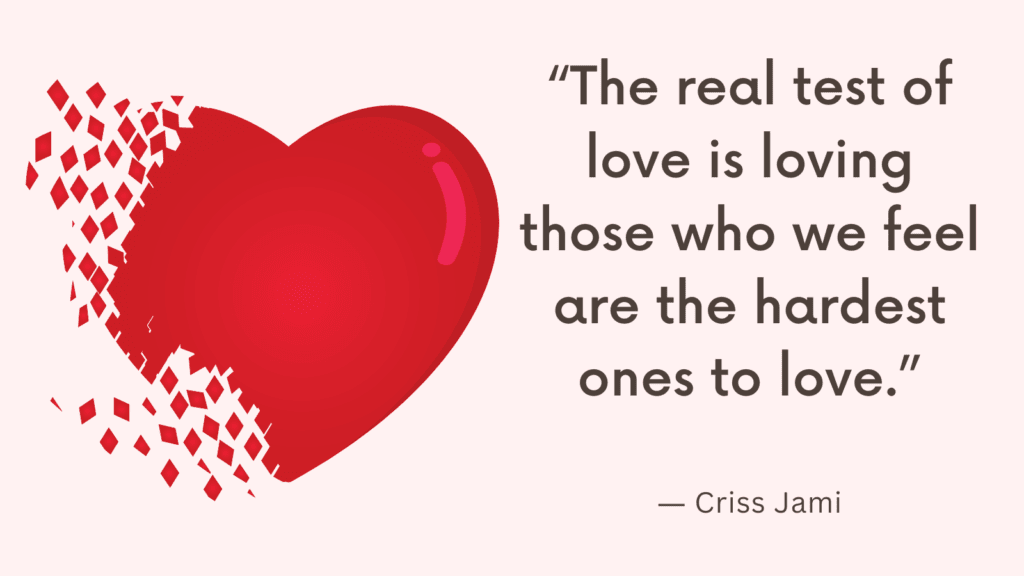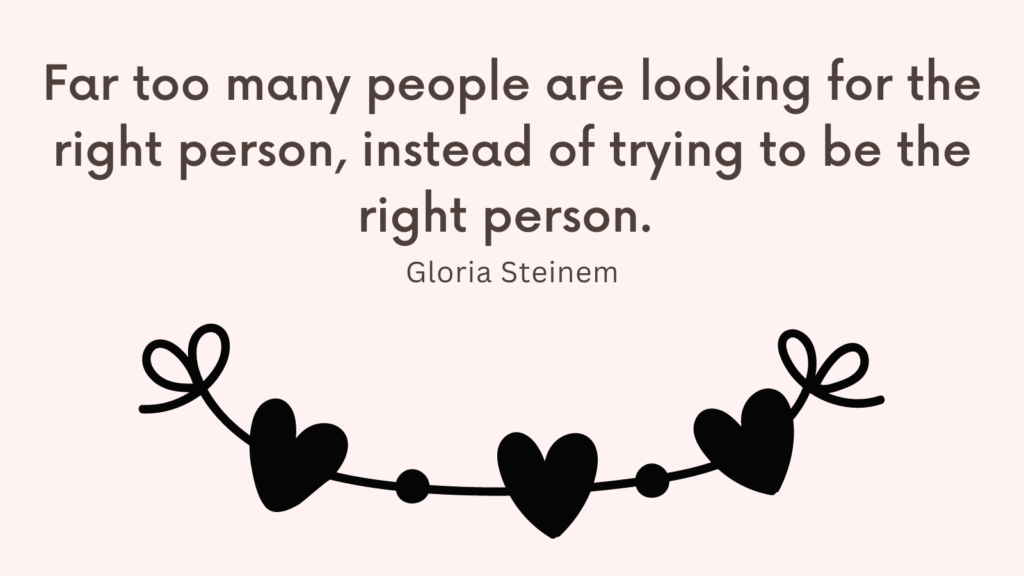Today, you’ll discover 4 essential keys to effective communication and how to overcome communication barriers in relationships.
Relationships end for different reasons.
Romantic relationships, for example, may end because there’s no chemistry or because the people in the relationship want different things.
But often, relationships end when they don’t have to.
One reason for this is lack of communication or non-effective communication.
Effective communication helps us connect with each other in a way that enriches our lives and creates depth in our personal relationships.
- Communication Barriers In Relationships: Compassion-Blocking Conversation
- 4 Communication Styles
- 4 Essential Keys To Effective Communication
- 11 Don’ts of Effective Communication
- Need More Help to Improve Your Social Skills?
- Why Improve Your Social Skills?
- How to Improve Your Social Skills? 30 Little Tricks To Success In Relationships
- Conclusion
Communication Barriers In Relationships: Compassion-Blocking Conversation
One way we’re blocking compassion in our conversations is by using moralistic judgments that point out the people’s wrongdoings that are not in line with our values.
These judgments can take the form of blame, insults, labels, criticism, comparison…
When we speak this language, our attention is focused on determining what’s wrong with others for behaving in certain ways rather than on what we and others need and are not getting.
Instead of thinking “my partner needs more affection” we might accuse him/her of being “too needy and dependent.”
But when we’re the ones who need more affection and aren’t getting it, he/she is “insensitive and uncaring.”
This compassion-blocking conversation will either increase people’s defensiveness and resistance, or make people agree to what we’re demanding out of fear, guilt, or shame.
We pay dearly when people respond to our needs out of a sense of either external or internal coercion. Sooner or later, their goodwill diminishes and they’re more likely to feel resentful.
Related: How to Identify Emotional Abuse and Recover from It?
4 Communication Styles
Communication styles refer to the way we tend to communicate.
There are four typical communication styles:
1. Passive
People in this group, often don’t communicate at all. Instead, they stuff their emotions.
They may do this out of fear of hurting others, but they may also believe that their opinions and feelings don’t matter as much as those of others.
If this describes you, you want to be aware that being passive may result in others violating your rights and not respecting your own needs, which eventually leads to resentment and conflict in your relationships.
2. Aggressive
This is when someone dominates and controls others.
Someone who is aggressive in his communication style, is usually direct, but in a demanding way.
This may leave others feeling resentful, hurt, and often fearful of the aggressive person.
Related: How to Stop Being an Abuser and Break Abuse Patterns?
3. Passive-Aggressive
A passive-aggressive communicator is someone who doesn’t express themselves directly.
They share the passive person’s fear of confrontation, but would still attempt to get their needs met using indirect ways, such as sarcasm, silent treatment, not following through on a promise and saying they “forgot,” etc.
This communication style can be very confusing to others and even manipulative.
4. Assertive
Assertiveness is when you express your thoughts and feelings in a direct and honest way.
When you’re assertive, you effectively listen and negotiate in a way that gets your own needs met while also trying to meet the needs of the other person as much as possible.
This communication style shows that you respect yourself as well as the person you’re communicating with. (*)
Related: How to Firmly Establish and Enforce Healthy Emotional Boundaries?

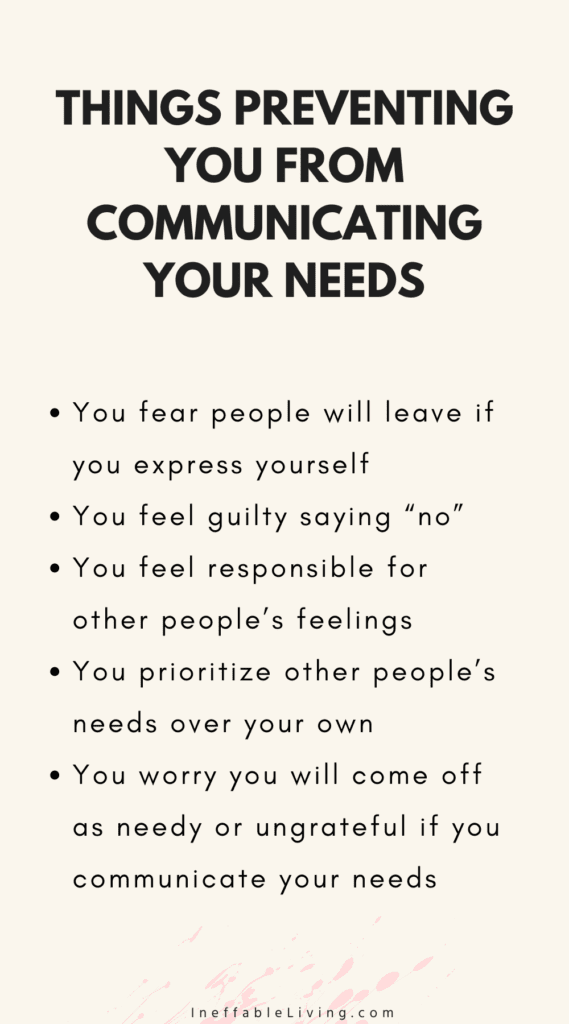
4 Essential Keys To Effective Communication
#1. Observe Without Evaluating
The first step toward effective communication requires separating observation from the evaluation.
In fact, when observation and evaluation are combined, the likelihood that others will hear our intended message will decrease.
Instead, they’ll more likely hear criticism and contempt and not respond to our needs.
This doesn’t mean that you need to remain completely objective and refrain from evaluating. It simply requires you to evaluate based on what you observe.
Make your observation specific for that time and that context.
Don’t use the words always, never, ever, whenever, etc. these words confuse observation with evaluation and can provoke defensiveness rather than compassion.
Instead of telling your partner that he’s uncaring, try to identify the incidents that made you feel not cared about, and point them out for him before expressing how you thought it was uncaring from him.
Related: The Art of Validation: How to Listen Without Giving Advice?
#2. Identify And Express Feelings
The second step toward effective communication is to identify and express how we are feeling.
We live in a culture that seems to consider feelings less important than “the right way to think”.
We tend to accept this attitude as truth—to our detriment. In fact, because we often fail to identify and express our feelings, we end up hurting other people and not having our needs met.
When a wife is feeling lonely and is seeking more emotional contact, telling her husband something like “I feel like I’m living with a wall” is more likely going to be heard as criticism than a request to connect more emotionally. He ends up feeling hurt and even more discouraged to connect.
It’s important to keep in mind that a sentence that starts with “I feel” isn’t always an expression of feelings and can often be replaced with the “I think”.
In fact, it’s not necessary to use the word feel when expressing a feeling.
Saying “I feel unimportant to you” is a description of how you think that person is perceiving you. An actual expression of feelings might be “I feel sad” or “I feel hurt.”
Related: How to Open Yourself Up and Get Comfortable With Receiving More in Your Life?
#3. Take Responsibility For Your Own Feelings
The third step toward effective communication is to take responsibility for our feelings.
This means that we need to acknowledge that what others say or do can be the stimulus, but never the cause of our feelings.
In fact, our feelings are the result of how we choose to receive what others say or do, and what needs and expectations we have.
When we receive a negative message from someone, whether it was verbal or nonverbal, we have four options as to how to react to it:
1. Take it personally by hearing the blame and criticism
We accept the other person’s judgment and blame ourselves. When someone tells us that we’re selfish, we think to ourselves, “I should’ve been more sensitive.”
This can take a toll on our self-esteem as it leads us to feel guilty and ashamed.
2. Fault the speaker
As a response to being accused of selfishness, we can respond by saying “That’s not true! I’m always considering your needs. You’re the one who’s really selfish.”
Blaming the speaker this way will likely leave us feeling angry.
3. Shining the light on our own needs and feelings
We might reply, “When I hear say that I’m selfish, I feel hurt because I need some recognition of my efforts to be considerate of your needs.”
This makes us more conscious that our feelings of hurt are a result of needing recognition for our efforts.
4. Shining the light on the other person’s needs and feelings
We might ask, “Are you feeling hurt because you need more consideration for your own needs and preferences?”
We accept responsibility for our feelings, by acknowledging our own needs, desires, expectations, values, or thoughts.
Taking responsibility for the feelings of others, on the other hand, can easily be mistaken for positive caring.
It might appear that you’re caring for the other person when you feel bad for their suffering. But if you change your behavior according to the other person’s wishes, you might not act from the heart and simply act to avoid guilt.
In a culture that judges revealing our needs, doing so can be very frightening. We often learn to ignore our own needs.
However, since we can’t do without these needs, we end up asking them in a way that both reflects and reinforces the beliefs that we have no right to our needs and that they’re unimportant.
So when a woman, for example, is feeling tired and needs some time for herself, she might find herself complaining about the endless chores she had to do that day.
And while all she wants is for her partner to give some help, he might hear criticism and become defensive. In the end, she’s again persuaded that her needs don’t matter.
The course of developing emotional responsibility usually starts with an emotional liberation from the belief that we’re responsible for the feelings of others, and that it’s our responsibility to keep everyone happy.
All while, acknowledging that we can’t meet our own ends at the expense of others.
Related: Get Out of Your Own Pity Party: How to Stop Pitying Yourself?

#4. Request That Which Meets Your Needs
The fourth step toward more effective communication is to request that fulfills your needs.
How do we make requests that make others more willing to respond compassionately to our needs?
1. Use positive action language
You need to express what you’re requesting instead of what you’re not requesting.
For example, a wife who wants her husband to spend more time with her can ask him not to spend so much time at work, only to find out that he decided to start going to the gym.
A request that is worded in the negative, often, leaves people confused as to what is actually being requested.
2. Make requests consciously
Oftentimes, people don’t get what they need simply because they don’t really know what they need in the first place. We might express our discomfort and assume that the listener has understood the underlying request.
A mother might say to her son, “I’m annoyed that your room is such a mess.” While it may be obvious to her that she’s asking him to tidy up his room, her son may think that her words were only mean to make him feel guilty.
3. Don’t demand
When people state their request without first expressing the feelings and needs behind it, their request might be perceived as a demand by the listener.
“Why don’t you stop eating this junk food and go on a healthy diet?” can be heard by the listener as a demand or an attack. Instead, you can say “I’m worried that this junk food will affect your health negatively. How about eating less of it and introducing more healthy food into your diet?”
Read More: Struggling to Receive? 7 Steps to Open Up and Start Accepting Loved and Support
11 Don’ts of Effective Communication
Verbal abuse is a form of emotional abuse that often goes unrecognized.
Abuse may be said in an angry voice, but it can also be said in a quiet voice or even concealed in a joke.
Subtle verbal abuse can be just as damaging as overt verbal abuse, especially because it’s hard to recognize.
Here are some examples:
1. Blaming
Blaming refers to making someone else responsible for events or your feelings or actions.
When you blame, you disempower yourself. You paint yourself as a helpless victim.
Instead, try using a more assertive expression, such as, “I’m angry at you.”
2. Name-calling
Name-calling is a kind of bullying that’s intended to humiliate and put someone down.
3. Covert manipulation
Covert or hidden manipulation is an indirect power play that aims to get someone to act or feel the way the manipulator wants.
Charm, compliments, implied rewards, suggestions of punishment, guilt, shaming, or playing a victim role are forms of covert manipulation.
4. Ordering
Ordering someone to do something is an expression of control.
5. Raging
Raging or screaming is intended to intimidate and control.
6. Judging and criticizing
Judging and criticizing include evaluating the other person, giving unsolicited advice, and telling someone what they “should” do.
7. Jokes and sarcasm
This involves witty or ironic remark, playful teasing, or sometimes overt praise, that’s intended to inflict a wound.
8. Discounting and belittling
Discounting and belittling are implemented to minimize or trivialize feelings, thoughts, or experiences. The other person is left feeling as if his thoughts and feelings don’t matter or are wrong.
9. Opposing
Opposing is when the abuser treats you as an adversary, saying “No” to everything and arguing against every opinion or thought, without listening.
10. Blocking
This is when the person aborts conversation, by switching topics or using certain words that in effect say, “Shut up.”
11. Lying, denying, and gas-lighting
Conscious lying and denying is manipulative. It makes the victim gradually doubt their memory and perceptions, feeling like they’re crazy.
Gas-lighting is a persistent pattern of lying, named after the movie, Gaslight, where the husband, played by Charles Boyer used denial to make his wife, played by Ingrid Bergman, believe she is going crazy.
Related: 13 Traits of a Narcissist — and How to Deal With a Narcissist?
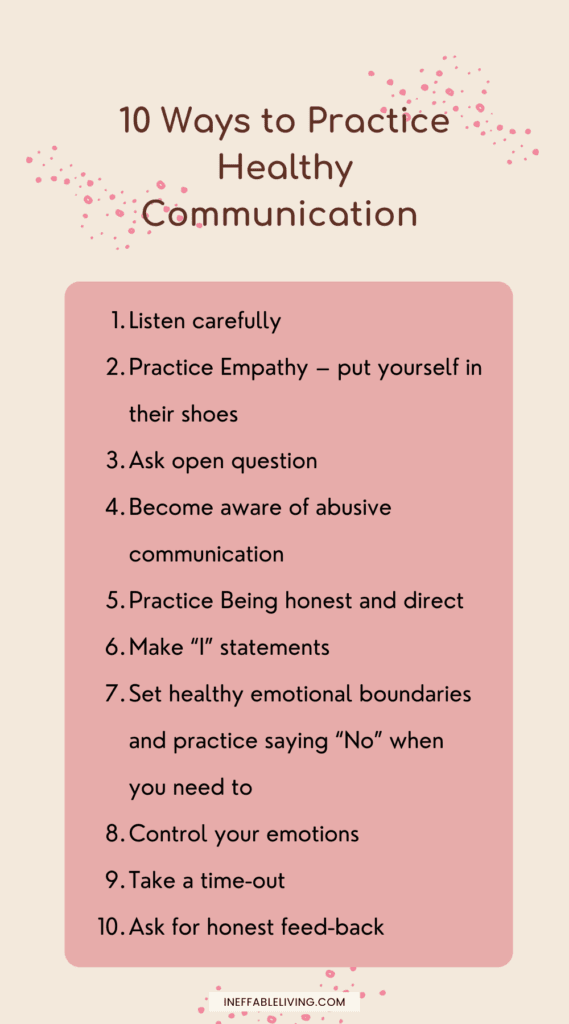
Effective Communication In A Nutshell
In order to communicate more effectively, four steps need to be followed:
1. Observe without evaluating.
2. Identify and express feelings.
3. Take responsibility for your own feelings.
4. Requesting that which would fulfill your needs.
First, you need to observe what is actually happening in a situation. You need to observe what others are saying or doing without introducing any judgment or evaluation. Then simply say what people are doing that you either like or don’t like.
Next, you state how you feel when you observe this action. Are you feeling hurt, scared, irritated, amused?
Then you express what needs of yours are connected to the feelings you’ve identified. For example, a wife can take responsibility for her own feelings by saying “Honey when I see your clothes piled up on the floor, I feel irritated because I need more order in our room.”
Finally, the wife can proceed to make a very specific request: “Would you put your clothes back in the closet or in the washing machine?”
Effective communication is a clear expression of the four components mentioned above.
Need More Help to Improve Your Social Skills?
Why Improve Your Social Skills?
Studies have found that there is a direct correlation between good connection with family, friends, community, and good health, independently of socioeconomic status and health practices such as smoking, drinking alcohol, physical activity…
When you learn social skills, you start getting more of your needs met from whomever you want, including the difficult people you all too often come across.
The goal here is not to manipulate or control others, but rather to learn how to persuade the other person positively and achieve a win-win situation where you get your need met and help enhance the other person’s self-esteem.
How We Make Decisions?
One communication principle you should keep in mind is:
Human beings act out of emotion, not logic.
This principle holds true for practically everyone, even though we often deny it, even while we’re in the act of doing it.
Most of us consider ourselves to be logical. However, no matter how logical we are, we still act out of emotion.
All of our decisions are driven by:
- The desire for pleasure, or
- the avoidance of pain.
Once we decide what we’re going to do based on those two factors, we back up our emotional decision with a logical reason.
How to Improve Your Social Skills? 30 Little Tricks To Success In Relationships
#1. Be Aware of The Roles We Play In Relationships
Modern therapy approaches, such as schema therapy, divide the personality into three main selves—child, adult, and parent.
The child-self or the inner child is a metaphor for the unconscious parts of our personality, defined in our childhood. These unconscious parts include our emotions, such as fear, pain, and anger, but also joy and love.
The parent-self or the inner parent is usually the result of our upbringing, biases, and environment.
Although the parent’s job is to nurture the inner child, often it comes out as the inner critic most people struggle with.
The adult-self or the inner adult is conscious parts of our personality that encompass our rational and reasonable mind. The inner adult assumes responsibility, weighs risks, decides and plans, and takes action.
The adult is also responsible for regulating the child (our emotions)
Each of us is capable of displaying one of these distinct personality states, depending upon what we are feeling at any specific moment.
You may notice the combinations of all three states within any relationship or interaction between two people.
When someone is criticizing, or talking down to someone, they’re operating from the parent-self.
When someone is feeling abandoned or rejected, they’re operating from the child-self.
An ideal interaction would be on the level of Adult to Adult.
However, you can’t expect others to act as you do. So the best you can do is to operate from the adult-self. Don’t put the other person down and don’t take the hurtful things they say or do personally.
#2. Learn The Difference Between “Responding” and “Reacting”
To respond is positive; to react is negative.
– Zig Ziglar
You respond to something the other person did or said when you’ve thought it out and acted in a mature. It takes into consideration the desired outcome of the interaction.
When you act out of emotions without considering the desired outcome of the interaction, then you are reacting.
#3. Empathy: Put Yourself In Someone Else’s Shoes
This can help you respond more instead of reacting with hate and anger.
For example, when someone says something hurtful, instead of reacting, take a moment to ask yourself, “What could possibly be happening in that person’s life that has caused his attitude to turn this negative?”
Maybe that person came from an abusive environment. Perhaps they were even mistreated.
This will help you not take the hurtful comment personally but also feel compassion for the other person, and as a result improve your relationship.
#4. Cultivate An Attitude of Thoughtfulness
Thoughtfulness doesn’t necessarily come naturally to everyone. It is a skill that you need to work on and practice.
Find small ways everyday to show practice thoughtfulness, such as holding the door open for someone, compliment someone or congratulate them for a promotion, or special recognition.
#5. Expect the Best of People
People typically behave the way they think you expect them to behave.
Winston Churchill once said, “I have found that the best way to get another to acquire a virtue is to impute it to him.”
When you want to bring out a response in a person, act towards them as though that is exactly how you expect them to respond.
For example, if you want something from someone, approach them believing they’re going to want to give it to you.
How does this work?
When you predetermine someone’s actions in your mind, you then approach them with the corresponding attitude.
For example, if you expect someone to be kind, you’ll project an attitude of gratitude.
#6. Smile, But Not Too Fast
A big, warm smile is an asset, when it comes a little slower.
Those who are slower to smile when meeting people are perceived as more credible especially in corporate life. In fact a slower appears more sincere and personalized for the recipient.
It makes them feel that the smile was special and just for them.
The right way to do it is to look at the person’s face for a second. Pause. And then let your big, warm smile flood over your face.
#7. Keep a Good Eye Contact
Maintaining a good eye contact can awaken feelings of respect and affection in the recipient. It can also make you look like an intelligent thinker.
Keep good eye contact even when the person has finished speaking. When you must look away, do it slowly and reluctantly.
If the person you’re interested in isn’t the one who’s talking, watch the speaker, but let your glance bounces to your target once the speaker finished a point.
This way your target will feel you are intrigued by their reaction without feeling intimidated.
#8. Have the Posture of a Big Winner
Big winners have the sort of glow one gets when a big jolt of happiness hits his heart.
Only big winners have that kind of look constantly. They hold their head high, they stand with assurance, walk with confidence and smile softly. This posture communicates success to anyone who comes their way.
#9. Give Your Undivided Attention
The instant you are introduced to someone or you meet someone, give them a warm smile and an undivided attention. This makes the person feel very special.
A trick to help you give the person the attention he’s seeking, would be to imagine he was a good old friend of yours whom you haven’t seen in years and suddenly after all those years, the two of you are reunited.
The following tips can also help you show interest:
– Giving the appropriate feedback and encouragement by using “Primal Sighs” and “International Grunts” like “Wow,” “Aha,” “Oh,” and “Hmm,” or using full-blown reactions like “Oh, really,” “And then what?” and “You’re not serious. So, what did she do?”
– Keeping your body language open by nodding in agreement, maintaining eye contact, and occasionally looking away in thought to give the impression of participation like looking at your hands.
#10. “You” Is a Powerful Word
When we were infants, we thought we were the center of the universe. Nothing mattered but us. We didn’t change since then, and we’re still translating everything in terms of “How does that affect ME?”.
So when you want to compliment someone, instead of saying “that dress looks great on you.”, try saying “You look great in that dress” phrasing it that way, the person will feel great about themselves.
#11. Limit the Fidgeting
When you’re trying to attract the person you’re conversing with, limit your fidgeting. Let your nose itch and your ear tingle.
Hand motions near your face and fidgeting can give the other person the feeling that you’re not credible.
#12. Rehearse Your Confidence
Visualize the confident person, you want to be ahead of time. See yourself walking around with a confident posture, shaking hands and smiling warmly to people.
Listen to yourself chatting comfortably with these people and feel the pleasure of knowing that you’ve made a good impression on them. If you can see yourself doing all that, you can definitely do it.
#13. Match Their Mood
This is especially essential when having a small talk with someone.
Detect your listener’s state of mind and match his mood.
If he’s tired and starts to go about how long the day was, match his mood and tone of voice, if only for a moment.
This helps them feel that they’re okay and that the two of you are similar and thus bring you both together.
#14. Harness The Power of Neuro-Linguistic Programming (NLP)
Developed in the early 1970s by Richard Bandler and John Grinder, Neuro-Linguistic Programming (NLP) is a way to quickly and effectively developing rapport with another person.
NLP teaches us that each person processes information in three different ways: auditory, by hearing; visual, by sight; and kinesthetic, by touch or feeling.
For example, when someone says, “I see what you mean,” this may indicate that the speaker primarily processes information in a visual way, or is in a visual mode at the moment.
In such case, you may want to use similar terminology, such as “That looks good to me.”
Read More: NLP | What’s Neuro-Linguistic Programming and Why Learn It in 2021?
#15. Use Echoing
Using the same choice of words as your listener creates an instant rapport that can bring a sense of warmth and closeness and make your listener open up to you.
In fact, using the same words to describe something makes them feel you share their interests and experiences.
#16. Find Out Their Interests
If someone brought up plants, then she might have a relationship with them. Ask her more about it.
People love to talk about themselves and what interests them, and there’s no better way to start a conversation with someone than to ask him about what interests him.
#17. Find Out What the Hot Issues In Their Fields
Every industry has issues and interests the outside world knows little about. So before conversing with a doctor, try to find out what hot issues are in their field.
Asking a doctor about their specialty and their affiliations and relationships with their hospitals will definitely make you sound insightful and encourage your listener to talk more about themselves and open up to you.
A great way to find out what hot issues are in a certain field, is to ask a friend of yours who’s in that field.
#18. Check Out the Latest News
One of the best ways to always find something interesting to say is to check the latest news.
Turn on the radio news and scan your newspaper. Being up to date with the latest news can also save you from asking what everyone is talking about.
#19. Accentuate the Positive
When meeting someone for the first time, make sure you accentuate everything positive about you. Some people might feel compelled to share some secret or reveal an intimacy in order to show their listener that their human beings too.
It might work and get you both closer in some cases, but for the majority of cases, it’s best to leave these secrets for later in the relationship.
#20. Don’t Ask “What Do You Do?”
The question “what do you do?” can throw people off guard. Some people don’t have a cool job, some women have chosen to devote themselves to motherhood and such a question might make them feel guilty.
On the other hand, not asking the question will convince your listener that you’re enjoying their company for who they are and not for any networking reason.
So instead, you can ask simply ask them “How do you spend most of your time?”
#21. Compliment Them Behind Their Backs
Everyone loves receiving a compliment.
However, giving an out of the blue compliment, face-to-face, might make the recipient assume that there’s something behind it other than being a genuine compliment.
This is why praising people behind their backs, in front of someone who is close to the person you wish to compliment and who’s likely to report it back to him, is a great way to spark the interest of your desired person.
#22. Acknowledge Someone’s Efforts
People tend to do more of what others acknowledge in them.
This is mainly because most people don’t recognize a job well done so your compliment will be very appreciated and will be a source of pleasure that compels the person to get more of.
Your appreciation should be genuine, or that person will only feel manipulated.
#23. Keep an Attitude of Politeness
When dealing with a difficult person, take a breath and remind yourself to remain polite.
This is not only a proper way to act but it will also disarm the person.
For example, if someone starts complaining or yelling, hear him out without interruption. Then say something like, “I’m sorry, I must have said or done something to upset you. Did I?”
That alone can be enough to make the other person feel heard, but also understood and help them calm down.
Make sure this is genuine. Put yourself in that person’s shoes. How would you feel if you were in his situation?
#24. Use The “I Message” When Complaining
It commonly known that when meeting someone new, we need to be you-oriented as opposed to I-oriented by asking that person questions about himself and his life.
However, when it comes to complaining, for example, it’s best to use the I message to disarm the other person, making them more receptive to finding a solution to the challenge.
For example, rather than saying, “You are disrespecting me,” try saying, “I feel upset. It might just be how I’m taking it, but I feel disrespected.”
#25. “Thank You” in Advance
Thanking people in advance is a powerful way to get them to help you and cooperate with you.
It’s also important to keep in mind that your thank you must be said with sincerity and humility, rather than an as an implied demand or with a sense of entitlement.
To help with that, take a moment to reflect on something you feel grateful for with this person.
#26. Let the Person Feel It Was Their Idea
It’s easier to get people to agree to your point of view if they feel that it’s also their point of view.
How to you achieve that?
If the person said something similar to your point of view, try saying something like, “As you were saying earlier…,” or, “As you pointed out earlier…”
If the person didn’t say anything similar earlier, this could still work as long as it isn’t contrary to their beliefs. Simply adjust your wording to something like, “As you might say, …”
#27. Give The Power Over
If you need something from someone, willingly give the power over to them by saying:
“If you can’t do it, I understand.”
And then, if appropriate, you can sincerely add,
“If you could, I’d really appreciate it.”
This acknowledges that the other person has the power but also shows respect.
The person will be then more receptive to help you or find a solution.
#28. Involve People In The Challenge If You Want Their Help
People are more willing to help if they feel your challenge is also their challenge.
You can do this by asking them something like, “What would you do if you were in my place?”
#29. “I Know That You Already Know…”
Most people don’t like to be told what to say or what to do, especially if it’s something they already think they know all about.
So when you want to give someone specific instructions, tell them that you know that they already know and then provide him with the necessary information.
This helps take the sting out of what you’ll say, but also leave the other person feeling good about you and about themselves.
#30. Resolving Conflicts
Resolving conflicts is one of the most difficult conversations to have.
Dr. Paul W. Swets, author of The Art of Talking so that People Will Listen, present an approach to conflict resolution:
1. “I hear”: Define the problem or the challenge. Make sure there is no misunderstanding between you.
2. “I agree”: Look for a point of agreement with the other person.
3. “I understand”: Understand the other person’s feelings because this is what most people desperately want.
4. “I think”: State views calmly.
Conclusion
Connecting with people is one of the keys to success.
In fact, the better you are at connecting with people, the better the quality of your life.
When you learn how to make meaningful connections fast with other people, your relationships at work and even at home improves, and your life quality improves.
Attention craves novelty and is easily distracted.
For that, you need to capture attention with your likability and then hold on to it with the quality of rapport you establish.
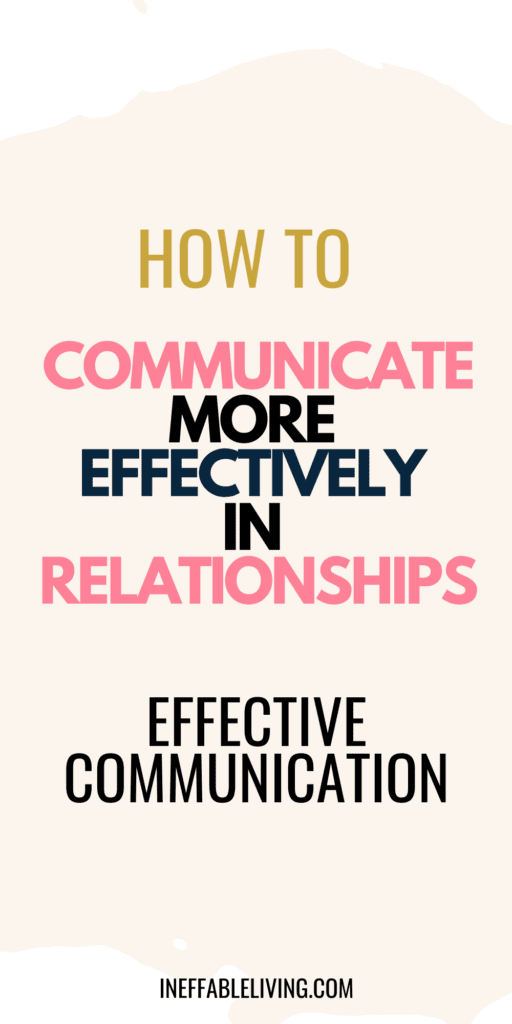
Resources
- Portions of this article were adapted from the book Nonviolent Communication: A Language of Life, © 1999 by Marshall B. Rosenberg. All rights reserved.
- Developing Effective Communication Skills – PMC (nih.gov)
- Effective Communication – an overview | ScienceDirect Topics
- (PDF) THE ROLE OF EFFECTIVE COMMUNICATION IN STRTEGIC MANAGEMENT OF ORGANIZATIONS (researchgate.net)
- Effective Communication | Science of People
- Comparative Study Regarding Communication Styles of The Students (sciencedirectassets.com)
- Frontiers | Psychometric Properties and a Preliminary Validation Study of the Italian Brief Version of the Communication Styles Inventory (CSI-B/I) | Psychology (frontiersin.org)
- (PDF) Assertive Communication Skills (researchgate.net)
- Being assertive: Reduce stress, communicate better – Mayo Clinic
- From aggressive to assertive, – PMC (nih.gov)
